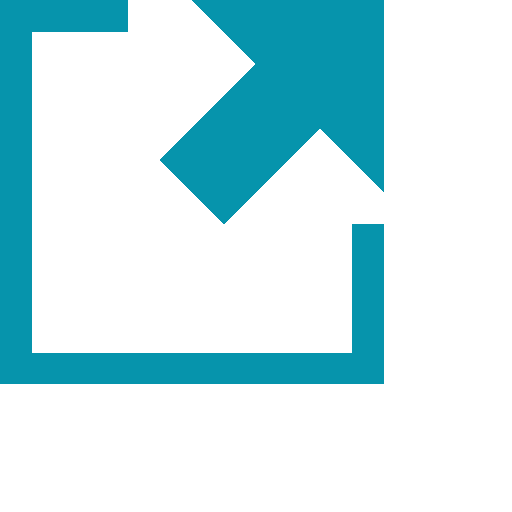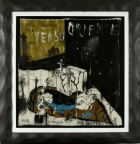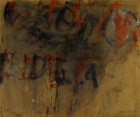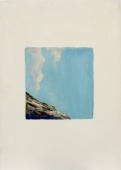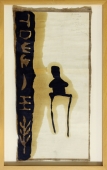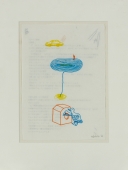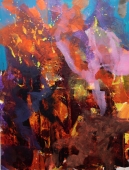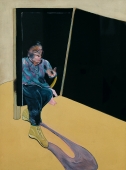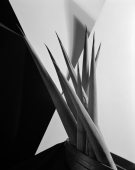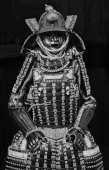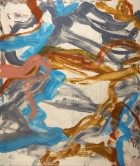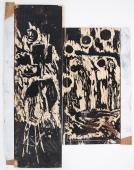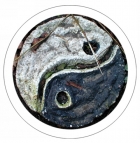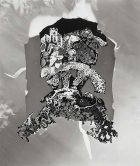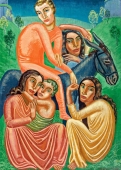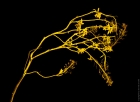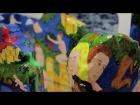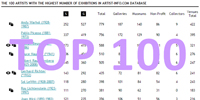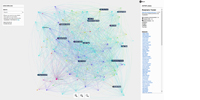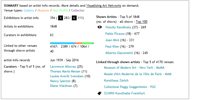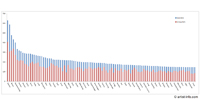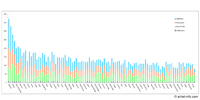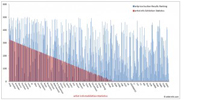
Artist | Udo Koch (*1958)
https://www.artist-info.com/artist/Udo-Koch
 Artist Portfolio Catalog
Artist Portfolio Catalog
| Image | Artist | Title | Year | Material | Measurement | ||||||||||||||||||||
|---|---|---|---|---|---|---|---|---|---|---|---|---|---|---|---|---|---|---|---|---|---|---|---|---|---|
 |
Udo Koch | Hand II | 1989 | plaster, wood (MTC) | 17 x 30 x 24 cm | ||||||||||||||||||||

Udo Koch (*1958)Hand II
|
|||||||||||||||||||||||||
 |
Udo Koch | Clivia IV | 1994 | plaster, wood | 76 x 129 x 156 cm | ||||||||||||||||||||

Udo Koch (*1958)Clivia IV
|
|||||||||||||||||||||||||
Biography
Biography
born in 1958
About the work (english / deutsch)
About the work (english / deutsch)
Drawings for "Hand" and "Clivia"
Udo Koch unravels the tangle of meanings bound up wit the subject of the hand via an objectifying process. It is a process which initially has a sober feel to it. In his drawings, Koch carefully applies a constructivism with an unusual thrust, arriving at surprising and absurd results: cell divisions, spatial tumescence, organisms, and they are all organized as reproductions of the hand, of its proportions, the space formed around it. Udo Koch developed his drawings starting out with the axes for mirror imaging that are naturally inscribed in the contours of the hand - he then extrapolates from this the hand's own intrinsic spatial laws, to the point of the drawing appearing to create illusions. The genesis of the form of the drawings also demonstrates the character of drawing itself: the latter arises not merely as a way of creating illusions and imparting knowledge, but from a method that subjects the organic to the dominance of straight lines, thus engendering new and controlled variants of natural forms. Above all, Koch's drawings of the "Clivia ", that many-tendrilled plant, can be understood as a history of creation developed from an inner core, from some original cell.
The organization of direction und space in Koch's drawings generates phenomena which you think you have seen before in Karl Blossfeldt's photographic catalogue of forms, his 1928 "Urformen der Kunst". Conglomerates and reflections, rings, spheres, columns, wreaths, meandering patterns. These shapes with which the forms themselves are instilled then serve as the basic elements of the next, alienated form that they generate. This ambivalence is an intentional part of Koch's drawing. He shows us how, by adhering to the original idea first a regular cosmos arises which, however, on closer observation, takes on a chaotic shape.
In his drawings Udo Koch's work is overtly centred around a concept of responsibility only unto itself. The drawings are self-sufficient and independent, even if they take up substantive strands of traditional art. Just as the human hand, guided by inner perception, is able to establish contact with things an the demands of the outside world, so too Udo Koch's drawings allow us to gaze into a modelbuilder's workshop for good reason. It goes without saying that Koch's drawings form the basis of his sculptural oeuvre. And it shouId be equally evident that he has chosen the hand as a subject that was simply "there", lending his personal signature to the studio life of the artist, presenting the artist as spell-bound in the studio, as it were.
German text by Rudolf Schmitz / Translation by Jeremy Gaines
(Extract - Full printed version available in the Museum)
MMK - Museum für Moderne Kunst, Frankfurt am Main
Werkzeichnungen zu "Hand" und "Clivia"
Der Wust von Bedeutungen, der sich mit dem Sujet der Hand verbindet, wird von Udo Koch in einem zunächst nüchtern wirkenden Objektivierungsverfahren gebändigt. In seinen Zeichnungen befleißigt sich der Künstler eines unüblich angesetzten Konstruktivismus und kommt damit zu überraschenden und absurden Ergebnissen: zu Zellteilungen, Raumgeschwulsten, Organismen, die als Vervielfältigungsbilder der Hand, ihrer Proportionen, ihrer Zwischenräume organisiert sind. Udo Kochs zeichnerisches Entwickeln nimmt seinen Ausgang von Spiegelungsachsen, die der Handkontur angelegt oder eingeschrieben sind, und schreitet fort mit eigener Raumgesetzlichkeit, bis hin zur Illusionswirkung. Die zeichnerische Formgenese demonstriert zugleich den Charakter des Zeichnens selbst: Nicht Illusionstechnik und Gewußtes stehen am Anfang, sondern eine Methode, die das Organische der Herrschaft gerader Linien unterwirft, um damit neue und beherrschte Spielarten naturhafter Form sprießen zu lassen. Vor allem Udo Kochs Zeichnungen zur "Clivia", der vielfingrigen Pflanze, könnten aufgefaßt werden als eine Schöpfungsgeschichte, die sich aus einem inneren Kern, der Urzelle, entwickelt.
Die Richtungs- und Raumorganisation in Kochs Zeichnungen bringt Erscheinungen hervor, wie man sie aus der fotografischen Formenbibel von Karl Blossfeldt ("Urformen der Kunst", 1928) zu kennen meint. Es ergeben sich Konglomerate und Abstrahlungen, Ringe, Kugeln, Säulen, Kränze, mäandrierende Muster. Diese Ausprägungen von Gestalt können selbst wieder als Grundelement einer nächsten, verfremdeten Ausformung dienen. Verfremdung ist das nur für denjenigen Blick, der den Ursprung verliert. Diese Ambivalenz allerdings ist in Udo Kochs Zeichnungen angelegt. Der Künstler führt vor, wie unter Festhalten an einer ursprünglichen Idee ein geregelter Kosmos entsteht, der bei schwellender Aufmerksamkeit chaotische Züge annimmt.
Das eigenverantwortliche Konzept, das Udo Kochs künstlerisches Werk charakterisiert, findet in den Zeichnungen seine Grundlage. Hier liegt es offen zutage. Es handelt sich um eine Autarkie, die dennoch an wesentliche Traditionen der bildenden Kunst anknüpft. In gleicher Weise wie die menschliche Hand, von innerer Wahrnehmung gesteuert, Kontakt herzustellen vermag mit den Dingen und Anforderungen der Außenwelt, so gestatten Udo Kochs Zeichnungen Einblick in die Werkstatt eines Modellbauers, der seine guten Gründe hat. Daß Udo Kochs Zeichnungen die Ausgangsbasis seines skulpturalen Werks sind, muß nicht mehr erwähnt werden. Daß er mit der Hand ein Sujet gewählt hat, das schlicht "vorhanden" war und er darüber hinaus die Ateliersituation des Künstlers mit persönlichem Signum bekräftigt, sich geradezu festgebannt präsentiert, dürfte ebenfalls deutlich geworden sein.
Text von Rudolf Schmitz
(Auszug - Der vollständige Text ist als Informationsblatt beim Museum erhältlich)
MMK - Museum für Moderne Kunst, Frankfurt am Main
Bibliography
Bibliography
Ammann, Jean-Christophe/Arden, Roy/ Obrist, Hans-Ulrich/Schmitz, Rudolf: Udo Koch. Verlag Jürgen Häusser, Darmstadt, 1994.
ISBN: 3-927902-88-8
 Exhibition Announcements Exhibition Announcements 
| Learn more about this service |
|---|
 offers / Requests offers / Requests  |
Learn more about this service |
|---|
 Visualization |
Learn more about this service | ||
|---|---|---|---|
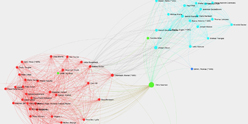
Interested in discovering more of this artist's networks?
3 easy steps: Register, buy a package for a visualization, select the artist.
See examples how visualization looks like for an artist, a curator, or an exhibition place: Gallery, museum, non-profit place, or collector.

Exhibition History

|
SUMMARY based on artist-info records. More details and Visualizing Art Networks on demand. Venue types: Gallery / Museum / Non-Profit / Collector |
||||||||||||
| Exhibitions in artist-info | 40 (S 11/ G 29) |
Did show together with - Top 5 of 337 artists (no. of shows) - all shows - Top 100
|
||||||||||
| Exhibitions by type | 40: 21 / 9 / 9 / 1 | |||||||||||
| Venues by type | 18: 5 / 3 / 9 / 1 | |||||||||||
| Curators | 8 | |||||||||||
| artist-info records | Jan 1986 - Jan 2016 | |||||||||||
|
Countries - Top 5 of 5 Germany (28) Switzerland (3) France (1) Austria (1) United States (1) |
Cities - Top 5 of 13 Frankfurt am Main (16) Düsseldorf (11) Fellbach (2) Basel (2) Feldkirch (1) |
Venues (no. of shows )
Top 5 of 18
|
||||||||||
Curators (no. of shows)
Top 5 of 8
|
| Galerie Ute Parduhn | G | Dec 2015 - Jan 2016 | Düsseldorf | (159) | +0 | |
| Deutsche Bank Collection - Artists | S | Apr 2015 - Apr 2015 | Frankfurt am Main | (1) | +0 | |
| Galerie Ute Parduhn | G | Nov 2014 - Jan 2015 | Düsseldorf | (159) | +0 | |
| Galerie Feurstein | G | Aug 2013 - Sep 2013 | Feldkirch | (1) | +0 | |
| Galerie Ute Parduhn | G | Feb 2013 - Apr 2013 | Düsseldorf | (159) | +0 | |
| Elke Dröscher Kunstraum Falkenstein | G | Sep 2012 - Oct 2012 | Hamburg | (30) | +0 | |












